Hyundai Tucson: SRSCM / SRS Control Module (SRSCM)
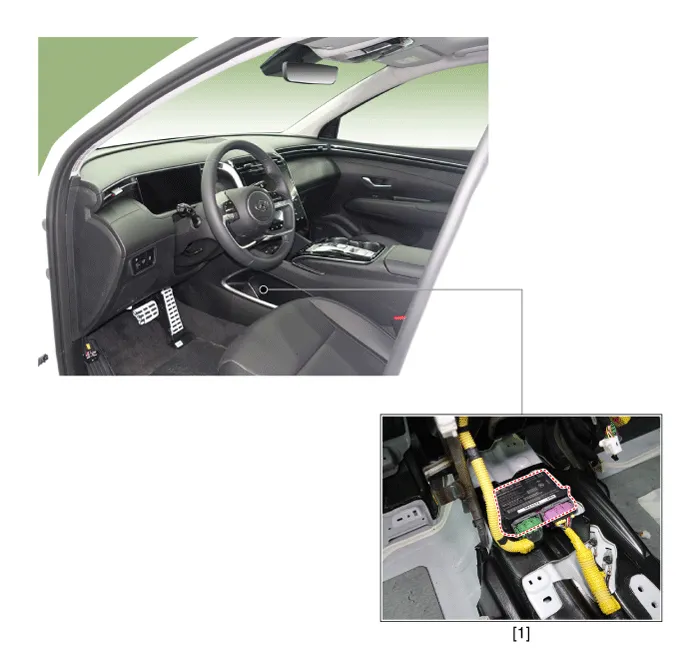
1. Supplemental Restraint System Control Module (SRSCM)
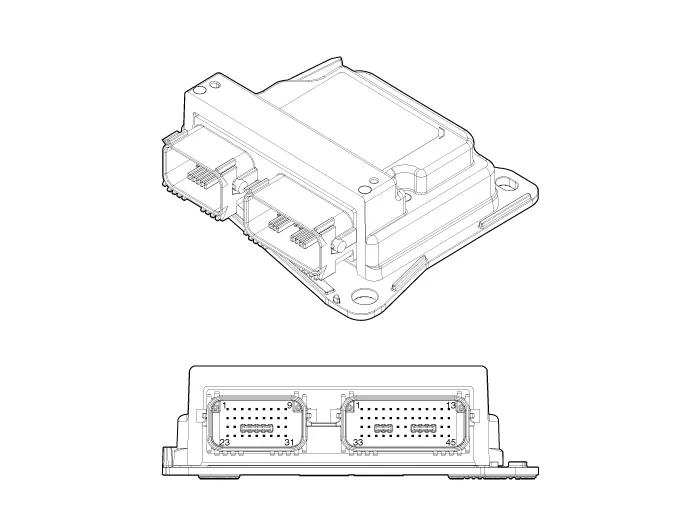
| No | Connector A | Connector B |
| 1 | Driver airbag #2 (High) | Rear driver seat belt pretensioner (High) |
| 2 | Driver airbag #2 (Low) | - |
| 3 | Passenger airbag #2 (Low) | - |
| 4 | Passenger airbag #2 (High) | - |
| 5 | Passenger airbag #3 (High) | - |
| 6 | Passenger airbag #3 (Low) | - |
| 7 | Passenger airbag active vent (Low) | - |
| 8 | Passenger airbag active vent (High) | Driver curtain airbag (High) |
| 9 | Driver airbag tether (High) | Driver curtain airbag (Low) |
| 10 | B+ | Passenger curtain airbag (High) |
| 11 | Crash output | Passenger curtain airbag (Low) |
| 12 | Passenger airbag #1 (Low) | - |
| 13 | Passenger airbag #1 (High) | - |
| 14 | - | Rear driver seat belt pretensioner (Low) |
| 15 | - | - |
| 16 | Passenger airbag OFF Lamp (Telltale) | - |
| 17 | Passenger airbag on lamp | Front center side airbag (Low) |
| 18 | - | Front center side airbag (High) |
| 19 | Driver airbag #1 (High) | - |
| 20 | Driver airbag #1 (Low) | - |
| 21 | - | Front passenger side airbag (Low) |
| 22 | - | Front passenger side airbag (High) |
| 23 | - | Front driver side airbag (High) |
| 24 | - | Front driver side airbag (Low) |
| 25 | - | - |
| 26 | C-CAN (Low) | - |
| 27 | C-CAN (High) | Front driver retractor pretensioner (Low) |
| 28 | IGN 1 | Front driver retractor pretensioner (High) |
| 29 | Driver front impact sensor (High) | - |
| 30 | Driver front impact sensor (Low) | - |
| 31 | Passenger front impact sensor (Low) | - |
| 32 | Passenger front impact sensor (High) | Front passenger retractor pretensioner (High) |
| 33 | Passenger airbag on / off switch (High) | Front passenger retractor pretensioner (Low) |
| 34 | Passenger airbag on / off switch (Low) | - |
| 35 | - | - |
| 36 | - | - |
| 37 | - | - |
| 38 | Rear passenger retractor pretensioner (Low) | |
| 39 | Rear passenger retractor pretensioner (High) | |
| 40 | Ground | |
| 41 | Rear driver impact sensor (Low) | |
| 42 | Rear driver impact sensor (High) | |
| 43 | Driver pressure side impact sensor (High) | |
| 44 | Driver pressure side impact sensor (Low) | |
| 45 | Passenger pressure side impact sensor (Low) | |
| 46 | Passenger pressure side impact sensor (High) | |
| 47 | Front driver side impact sensor (High) | |
| 48 | Front driver side impact sensor (Low) | |
| 49 | Front passenger side impact sensor (Low) | |
| 50 | Front passenger side impact sensor (High) | |
| 51 | Rear passenger side impact sensor (High) | |
| 52 | Rear passenger side impact sensor (Low) |
1.Disconnect the battery negative terminal.

• After disconnecting the cables, wait at least 3 minutes.
2.Remove the floor console assembly.(Refer to Body - "Floor Console Assembly")
3.Remove the rear air duct (A) by removing the mounting bolt.
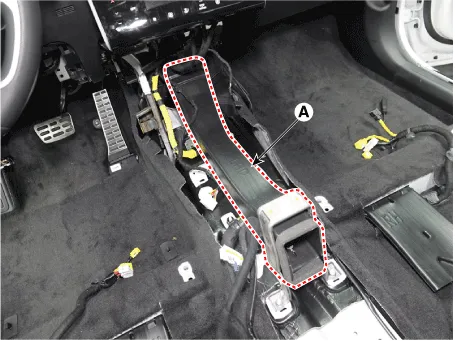
4.Pull up the lock of the SRSCM connector to disconnect the connectors (A).
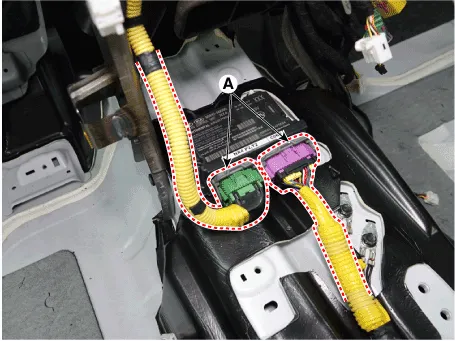
5.Remove the SRSCM mounting bolt and nuts, remove the SRSCM (A).
Tightening torque :Bolt : 10.8 - 13.7 N.m (1.1 - 1.4 kgf.m, 7.9 - 10.1 lb-ft)Nut : 7.8 - 9.8 N.m (0.8 - 1.0 kgf.m, 5.8 - 7.2 lb-ft)
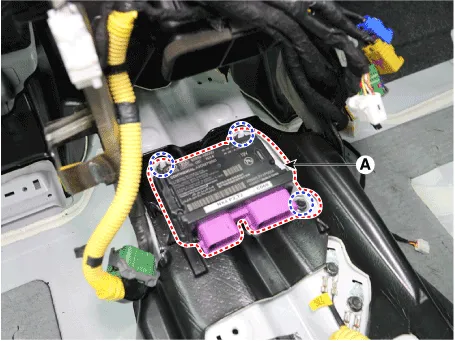
1.Install in the reverse of the removal.
2.After installing the SRSCM, confirm proper system operation.

• SIf the Switch ON the ignition, the SRS indicator light should turn on for about six seconds and then off.
1.Connect the cable of self-diagnosis to the data link connector in driver side crash pad lower panel, and turn on the self-diagnosis.
2.Select "Airbag" and "ACU Variant Coding".
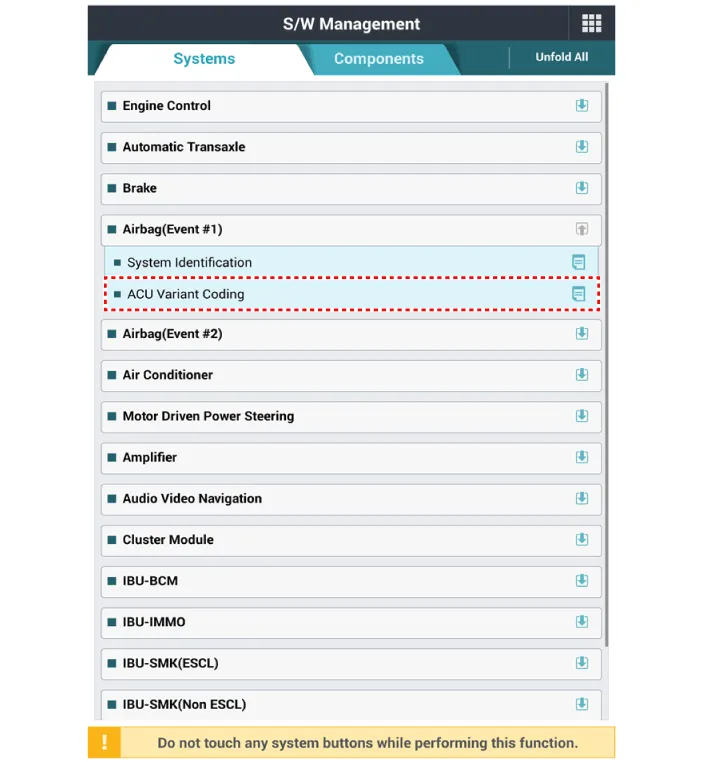
3.Perform the "ACU/SRSCM Variant Coding" procedure according to the self-diagnosis screen message.
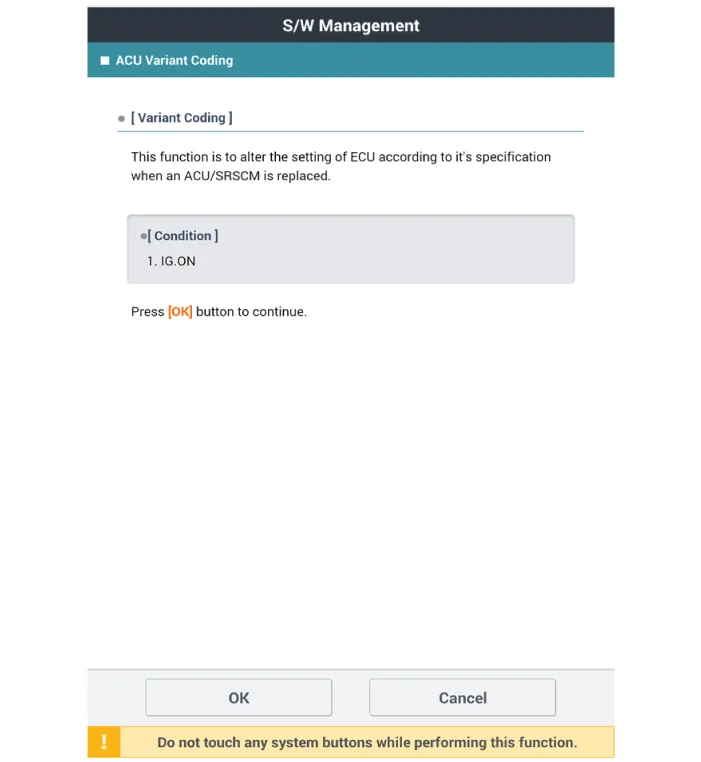
 Components and Components Location
Components and Components Location
- Components Location
1. Supplemental Restraint System Control Module (SRSCM)2. Gravity Side Impact Sensor (G-SIS) _ C pillar3. Gravity Side Impact Sensor (G-SIS) _ B pillar4. Front Impact Sens ...
 Front Impact Sensor (FIS)
Front Impact Sensor (FIS)
- Description
• The front impact sensors (FIS) are installed on the upper of the
side panel in Front End Module (FEM). They are remote sensors that
detect acceleration due to a collision at ...
Other information:
Hyundai Tucson (NX4) 2022-2025 Service Manual: Components and Components Location
- Components
1. Steering column2. Lighting swtich3. Wiper switch4. Clock spring5. Steering wheel6. Driver airbag (DAB)
...
Hyundai Tucson (NX4) 2022-2025 Owner's Manual: Fuses
A vehicle’s electrical system is protected
from electrical overload damage by
fuses.
This vehicle has 2 (or 3) fuse panels, one
located in the driver’s side panel bolster,
the other in the engine compartment.
If any of your vehicle’s lights,
accessories, or controls do not work, ...
